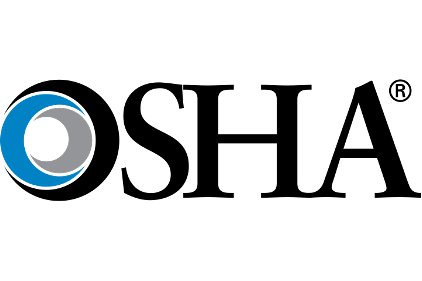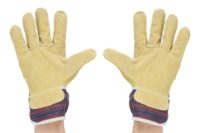New OSHA fact sheet emphasizes proper PPE use in disaster recovery

 As part of its ongoing efforts to educate workers and employers about hazards associated with cleanup work in the aftermath of weather calamities, OSHA has issued a new fact sheet highlighting the need for employers to provide their workers with appropriate personal protective equipment and the training to properly use that equipment.
As part of its ongoing efforts to educate workers and employers about hazards associated with cleanup work in the aftermath of weather calamities, OSHA has issued a new fact sheet highlighting the need for employers to provide their workers with appropriate personal protective equipment and the training to properly use that equipment.
The fact sheet is available online at www.osha.gov/Publications/OSHA-FS-3612.pdf.
To eliminate or minimize hazards, employers must assess each site and operation individually to determine actual or potential hazards based on site-specific conditions, implement appropriate controls to protect workers from those hazards, and train workers to recognize hazards and take necessary precautions. While engineering controls are the preferred method for addressing hazards, there are many cases in which PPE may be the only practical control method.
All personal protective equipment has limitations and is the control method of last resort. Workers using PPE must be trained to recognize these limitations as well as how to put on and remove PPE, properly store it, take care of it and know when it is time to replace it.
A basic safety ensemble for cleanup activities includes a hard hat, safety glasses, a reflective vest, gloves and steel-toed work boots. Add impervious gloves and boots for work in wet environments; appropriate respiratory protection where needed; fall protection when working over 6 feet; and hearing protection for noisy environments. Proper hygiene and sanitation are essential for minimizing the spread of contaminants and disease. Hand-washing is a critical component of good hygiene. In the absence of suitable facilities, workers should be provided with hand sanitizer.
Building Owners and Employers
●Always respond when occupant health concerns are reported.
●Regularly inspect building areas such as roofs, ceilings, walls, basements, crawl spaces, and slab construction for evidence of dampness; take prompt steps to identify and correct the causes of any dampness problems found.
●Conduct regularly scheduled inspections of heating, ventilating, and air-conditioning (HVAC) systems and promptly correct any problems.
●Prevent high indoor humidity through the proper design and operation of HVAC systems.
●Dry any porous building materials that have become wet from leaks or flooding within 48 hours.
●Clean and repair or replace any building materials that are moisture-damaged or show evidence of visible mold growth. Follow remediation guidelines such as those established by the following agencies:
- Environmental Protection Agency’s (EPA) Mold Remediation in Schools and Commercial Buildings [EPA 2008]
- New York City Department of Health and Mental Hygiene’s New York City Guidelines on Assessment and Remediation of Fungi in Indoor Environments [NYC DOHMH 2008]
- American Industrial Hygiene Association’s Recognition, Evaluation, and Control of Indoor Mold [AIHA 2008]
●Inform occupants that respiratory effects from exposure in damp buildings can occur and implement a system for response to: building dampness and musty or moldy odors, leaks, and flooding incidents.
Building-related respiratory symptoms or disease
●Encourage occupants who have developed persistent or worsening respiratory symptoms while working in the building to see a healthcare provider; refer to local or state listings of occupational medicine physicians or the Association of Occupational and Environmental Clinics at http://www.aoec.org/directory.htm.
●Follow recommendations from a healthcare provider for relocation of occupants diagnosed with building-related respiratory disease
●Establish an indoor environmental quality (IEQ) team to oversee implementation of an IEQ program. The IEQ team should consist of a coordinator and representatives of the building employees, employers, and building management. IEQ teams for schools may wish to include nurses, school board officials, and parents. The EPA’s
●Indoor Air Quality Tools for Schools (http://www.epa.gov/iaq/schools/) can be used as a model for such a program.
Source; NIOSH Alert: Preventing Occupational Respiratory Disease from Exposures Caused by Dampness in Office Buildings, Schools, and other nonindustrial Buildings.
Looking for a reprint of this article?
From high-res PDFs to custom plaques, order your copy today!




